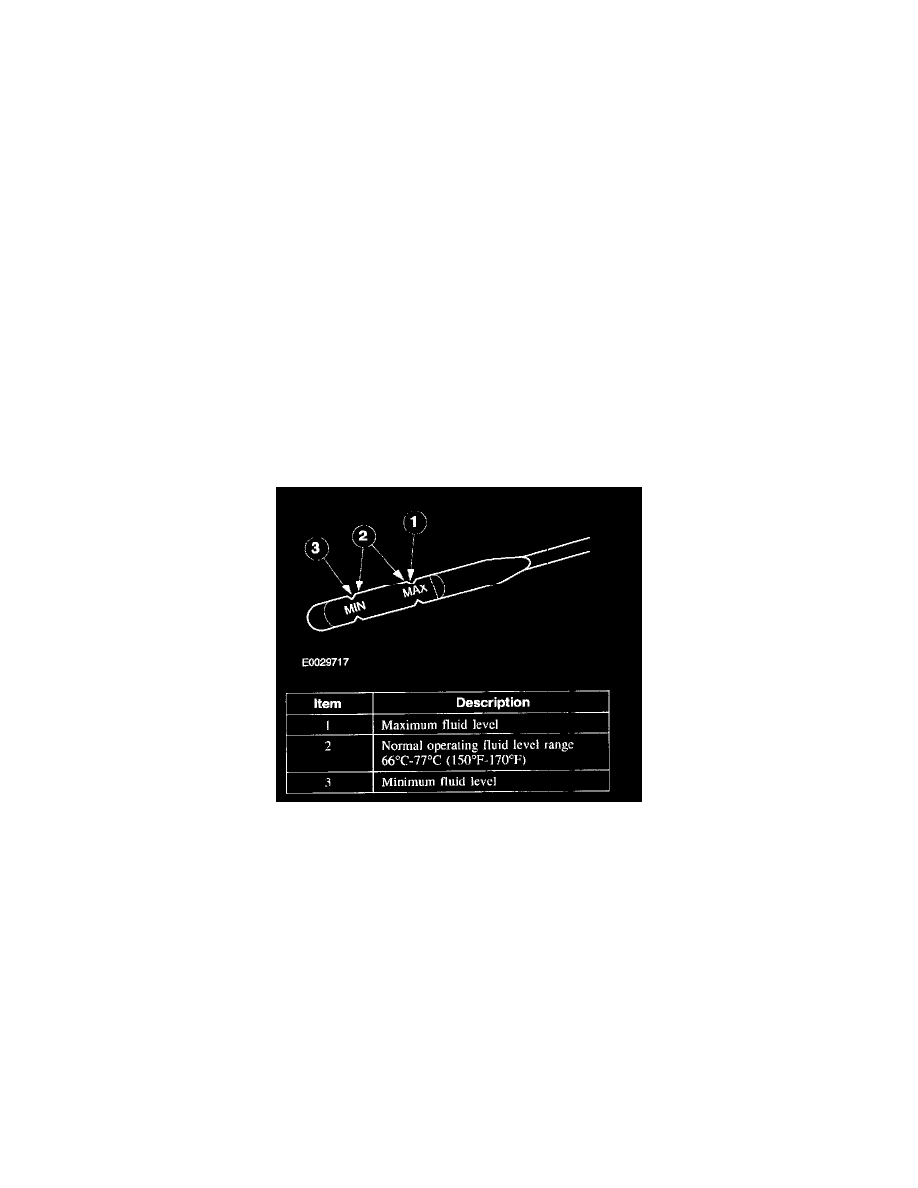Focus L4-2.0L DOHC VIN 5 (2003)

Fluid - A/T: Service and Repair
Check Fluid Level and Condition
Check Fluid Level
Under normal conditions, there no requirement to check the transaxle fluid level. However, if the transaxle is not functioning correctly, the transaxle
may slip, shift slowly or there may be some sign of fluid leakage, the fluid level should be checked.
CAUTION: The vehicle should not be driven if the fluid level is below the bottom line on the fluid level indicator and the ambient temperature is
above 10°C (50°F).
NOTE: Automatic transmission fluid expands when warmed. To obtain an accurate fluid level check, drive the vehicle until normal operating
temperature is reached, approximately 30 km (20 miles).
NOTE: If the vehicle has been operated for an extended period at high speeds, in city traffic during hot weather or pulling a trailer the vehicle should
be turned OFF for approximately 30 minutes to allow the fluid to cool before checking.
NOTE: Incorrect fluid level may affect the transaxle operation and could result in transaxle damage. To correctly check and add fluid to the
transaxle, refer to Preliminary Inspection.
1. Drive the vehicle 30 km (20 miles) or until the vehicle reaches normal operating temperature.
2. Park the vehicle on a level surface and engage the parking brake.
3. With your foot on the brake, start the engine and move the range selector lever through all the gear ranges. Allow sufficient time for each gear to
engage.
4. Place the range selector in "P" (park) and leave the engine running.
5. Remove the fluid level indicator and wipe it clean with a lint free cloth.
6. Install the fluid level indicator, making sure that it is fully seated in the filler tube.
7. Remove the fluid level indicator. The fluid should be within the designated areas.
High Fluid Level
A fluid level that is too high may cause the fluid to become aerated due to the churning action of the rotating internal parts. This will cause erratic
control pressure, foaming, loss of fluid from the vent tube and possible transaxle damage. If an overfill reading is indicated, adjust fluid to correct
level.
Low Fluid Level
A low fluid level could result in poor transaxle engagement, slipping, or damage. This could also indicate a leak in one of the transaxle seals or
gaskets.
Adding Fluid
CAUTION: The use of any other type of transaxle fluid than specified could result in transaxle damage.
If fluid needs to be added, add fluid in 0.25 L (1/2 pint) increments through the oil filler tube. Do not overfill the fluid.
Check The Fluid Condition
1. Check the fluid level.
